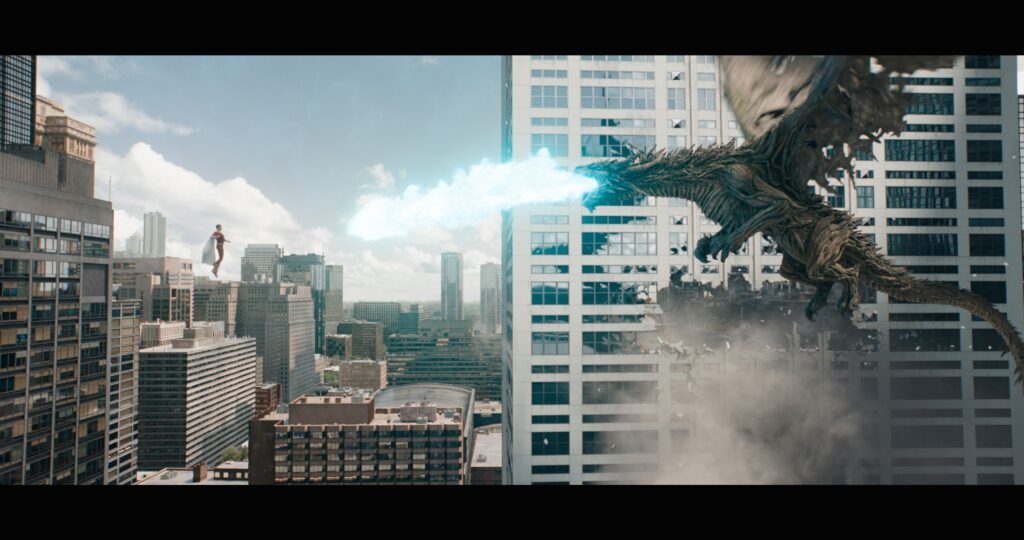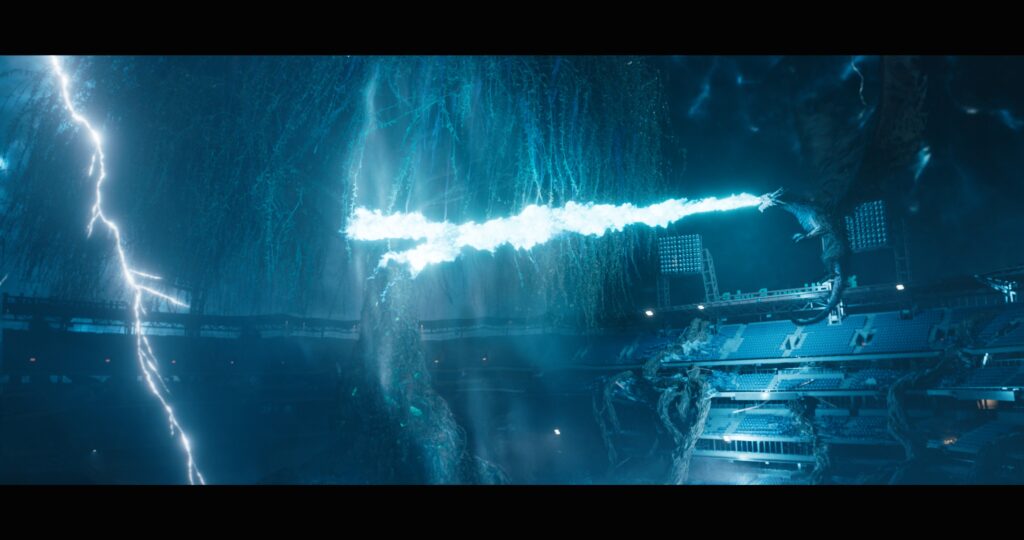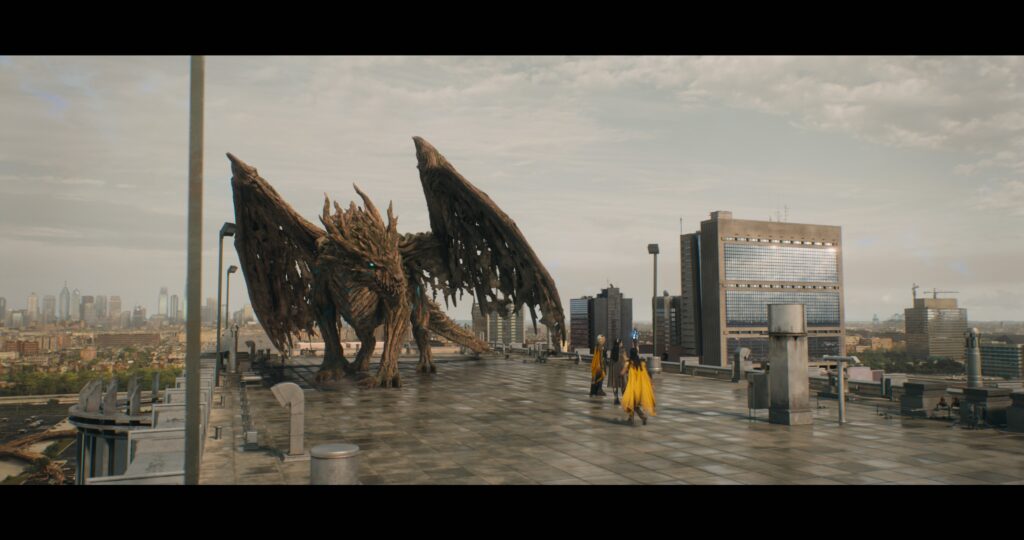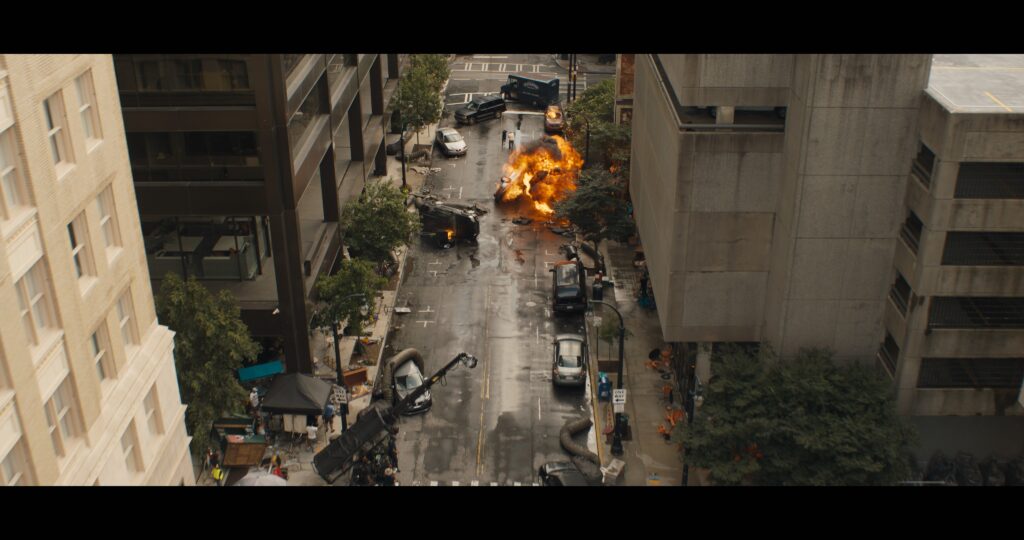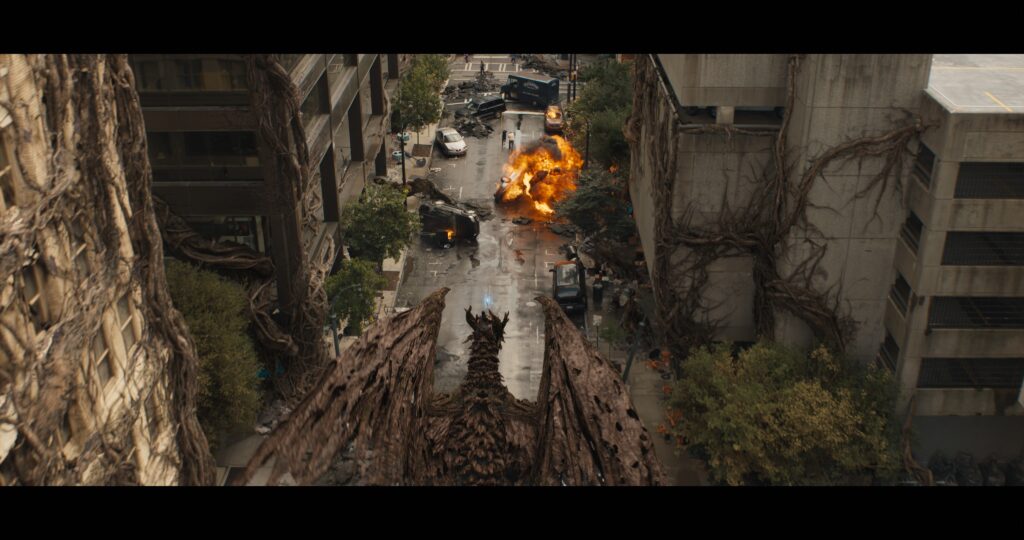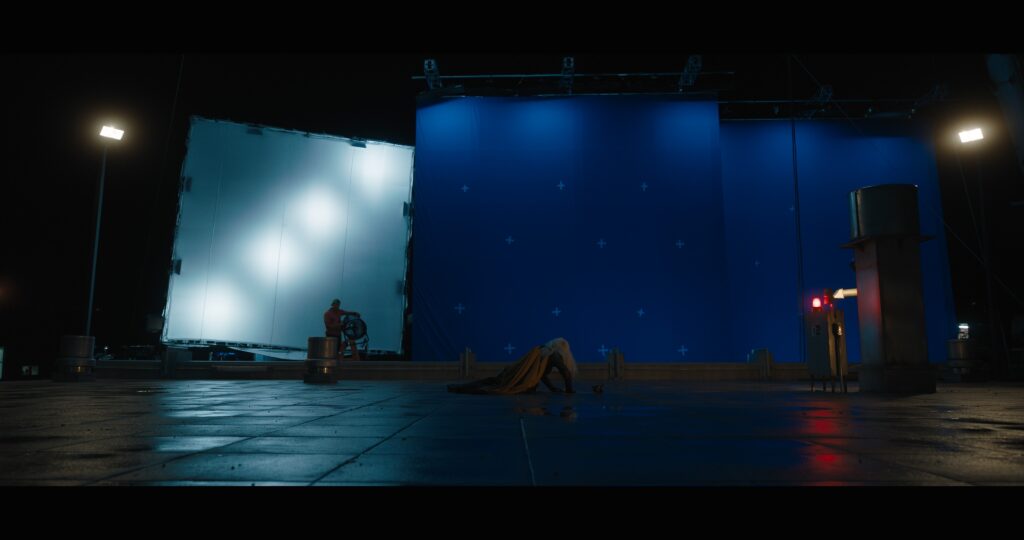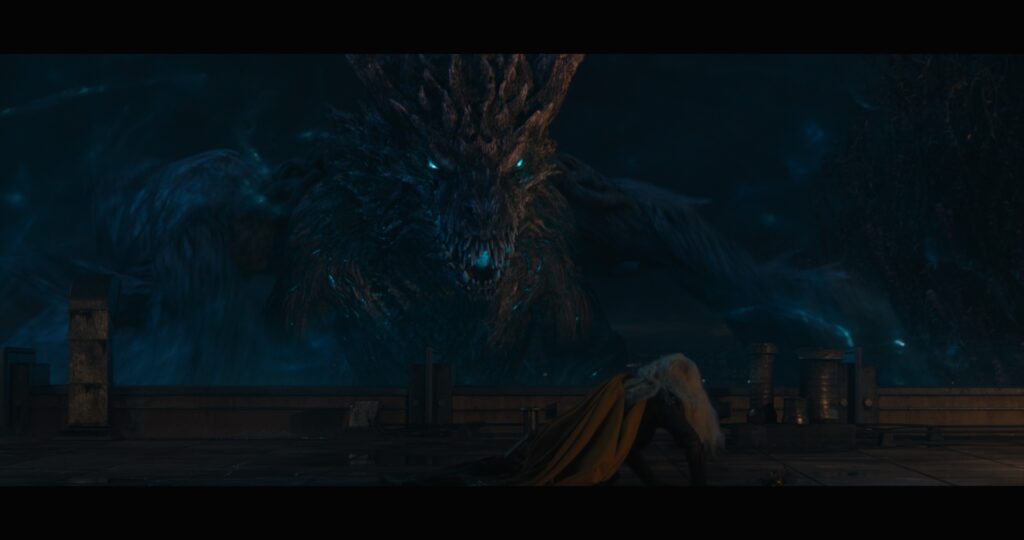Directed by David F. Sandberg, DC’s most recent release, Shazam! Fury of the Gods brings some awe-inspiring magical moments on screen with the use of cutting-edge visual effects.
The film features a talented ensemble cast, including Zachary Levi as the titular character, Asher Angel as his alter-ego Billy Batson, and Mark Strong as the villainous Dr. Thaddeus Sivana. It also introduces a new set of superheroes, the Shazam family, played by Jack Dylan Grazer, Adam Brody, Meagan Good, Ross Butler, D.J. Cotrona, and Michelle Borth, as well as a star-studded cast of Gods and mythical creatures, such as Helen Mirren as Hespera, Lucy Liu as Kalypso, and Djimon Hounsou as the Wizard Shazam.
One of the key players in bringing this epic adventure to life is DNEG, the lead VFX house, who worked on 757 shots for the film. In a recent interview with Animation Xpress, the DNEG team, consisting of VFX supervisor Russell Bowen, animation supervisor Ricardo Miguel Roldao Silva, and build creature supervisor Lucas Cuenca, delves into the challenges they faced, their collaborations with over 1000 artists from across the globe, and the intricacies of creature animation work. They also touch on the impact of evolving technology and AI. Join us as we uncover the secrets behind the mind-blowing visual effects of Shazam! Fury of the Gods.
Here is the detailed interaction with the brilliant artists from DNEG:
- How was the overall experience working on Shazam! Fury of the Gods?
Russell: Shazam was a VFX artist’s dream. Any VFX you could imagine, we had it. Sure, projects of this size and complexity have their challenges, but we had an incredible team of artists, leads, supervisors and production personnel to get the job done! The client, David F. Sandberg (director), Raymond Chen and Bruce Jones (production VFX supervisors), Kevin Elam (VFX producer) and everyone at Warner Bros. were incredible to work with and we all thoroughly enjoyed the project.
Ricardo: It was a great experience for the DNEG animation team. The project involved a broad variety of work and everyone was super excited to animate the dragon. Plus, lots of Shazam fans at DNEG. We also really enjoyed our collaboration with the director, David Sandberg, and his team. He understands the animation process well, so it was easy to show him work in progress and get good feedback.
Lucas: Working on Shazam! Fury of the Gods was an incredible experience. We had the opportunity to bring to life some truly amazing creatures, including a dragon and undead unicorns. It was a thrill to work on such unique and visually stunning assets, and to see them come to life on the big screen. It was a project that allowed us to showcase our creativity and technical skills. Overall, it was a fantastic project to work on, and we are very happy with the work we accomplished.
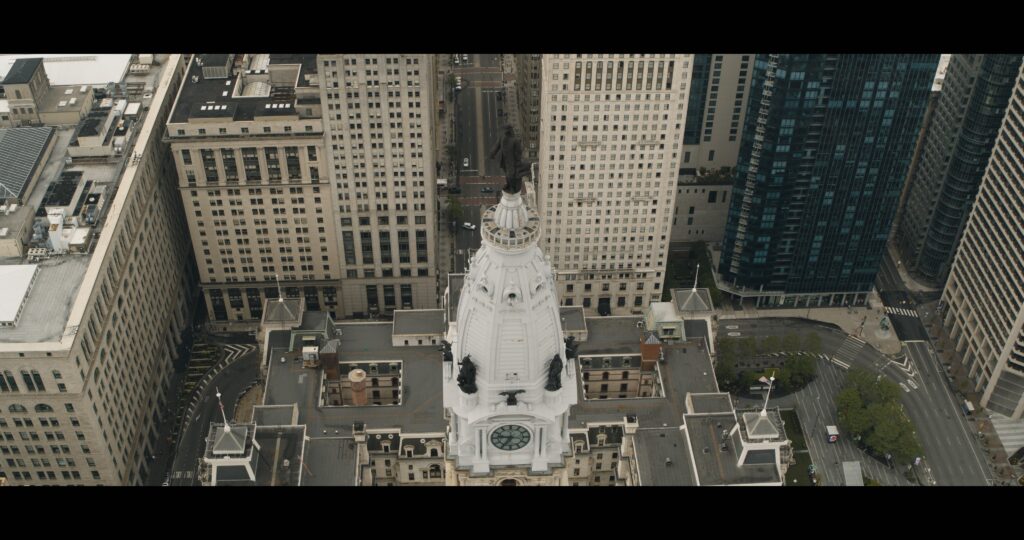
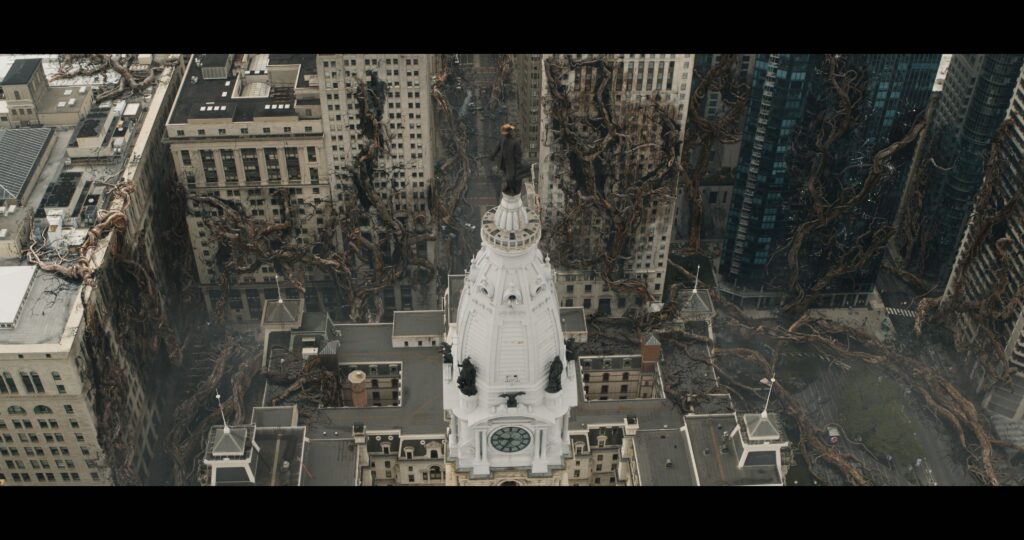
- What R&D went into working on this film and how many days did it take to deliver over 750 shots?
Russell: I can’t speak to the exact number of days, but there were many. This was a huge project split across a number of sites and over 1000 artists. Many R&D projects were needed for this project, a couple examples included our tentacle toolset, which was extensively used for the tree roots and our instancing tools for the city of Philadelphia, used for the Power of Axis from Anthea.
- Was the entire portion done in DNEG Canada or were other country studios also involved? If yes, then how was the work distributed?
Russell: We actually split the show across three sites, Vancouver (the hub), Montréal and Mumbai. We kept the Vancouver and Montréal teams together as ‘Team Canada’. In Mumbai, where a lot of the work was positioned, we had a team of production managers and supervisors. Usually, we try to keep that split clean, finding shots or sequences with particular assets or effects to be housed under one roof is best. The challenge with Shazam was every sequence contained every asset or effect imaginable, so we really had to stay on top of communication, even more so than usual.
- What is the most important point to keep in mind while developing a complex creature for any project like the dragon named Ladon seen in Shazam? When it comes to creature animation work, is it more difficult to create a fictional creature than a known tiger or say alligator?
Ricardo: They present different challenges. Realistic creature work is quite technically demanding. There is less artistic interpretation and getting all the real life details correct is very time consuming. With mythical creatures, like Ladon the dragon, we spent more time discussing ideas for the animation and studying real life animals to see how we can use those visual references to make Ladon’s performance believable. That is a key distinction for us: “believable” vs “realistic”.
When your movie has flying superheroes, all the work we do is in the realm of make-it-believable.
Lucas: When designing a complex creature for a project, it’s important to keep in mind that it will essentially be an actor. It will need to express emotions, interact with other characters, and perform actions in a way that feels believable and authentic. Therefore, it’s crucial to think about anatomy and performance of the creature during the design process to ensure that it will be possible to achieve the desired level of expression, interaction and realism.
Both are challenging in different ways. A real creature, like a tiger or alligator, has established reference points to work from, such as the animal’s anatomy, behavior, and movement. People already have a general idea of what real animals look and act like, which makes it extremely difficult to sell them on realism when interacting with real actors. With a fictional creature, there’s no real-life reference point, so we have more creative freedom and the opportunity to create something unique and memorable.
- How was the ‘sculpted wood dragon’ given the final on-screen look? Please explain the technique in brief.
Russell: This was really a mixture of elements and approaches that came together. Once we had the final sculpt and model approved we moved onto the surfacing. This would include everything from the textures and shaders of the ‘skin’, to the fine details of moss, vines and leaves that cover his entire body from head to toe which all needed to be simulated!
As the guardian of the tree, Ladon is made from the same material so we needed to combine this with the Tree of Life that sprouts up from the middle of the baseball field in Philadelphia., Due to the nature of him and the deformed tree itself, we drew inspiration from trees that we petrified, burnt and decayed. He needed him to feel evil, but also very powerful.
We even had an alternate version of the dragon’s head that we used for the close ups, like the riding shots, for example. This had even more detail, high resolution models and textures as it needed to hold up inches away from the camera.
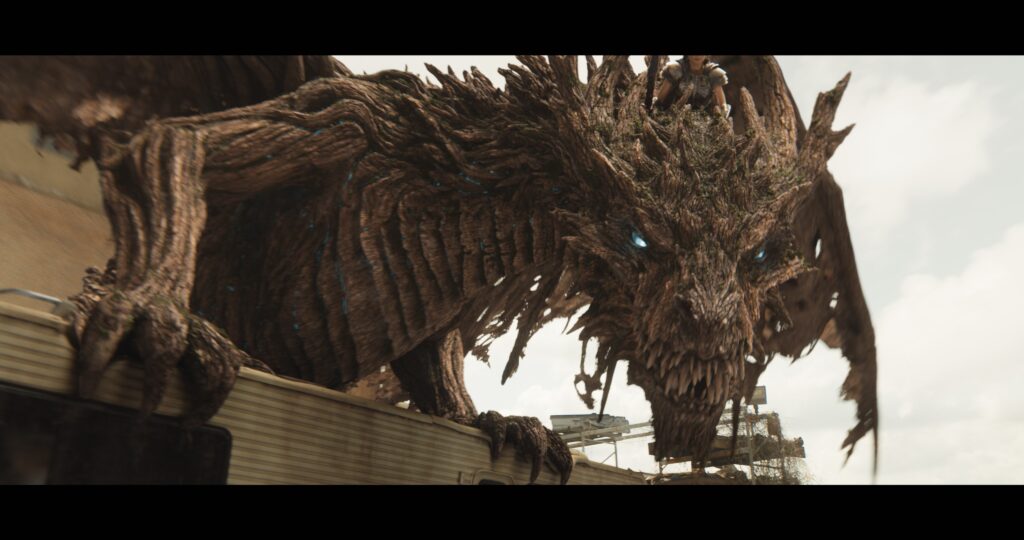
Lucas: The process of bringing the sculpted wood dragon to life on screen was a collaborative effort that involved several different disciplines. Firstly, the dragon’s overall shape and design was created by sculpting its primary, secondary, and tertiary forms. Next, the texture artist added intricate details such as textures and bumps to make the dragon look more realistic. This information was then incorporated back into the model and new displacements were exported.
Additionally, the groomer added vines, moss, and leaves to further enhance the dragon’s appearance. Finally, the look development artist combined all of these elements to create the dragon’s final on-screen look. Overall, it was a combination of several different techniques and disciplines that came together to create the sculpted wood dragon in Shazam.
- I have learnt that another complex creature design was that of the unicorn. Was it totally done using CG or did you have any structure built?
Russell: The final result onscreen was completely CG. But onset they had a very well made and realistic ‘bust’ of the unicorn’s head and neck, including the mane. This was used for eyelines, contact and even lighting reference. So whilst we ultimately completely removed it and replaced it, the bust was crucial to the approach to the shots, especially the closeups when Darla pets one.
- Please explain how the ‘digi-doubles’ were used in Shazam! Fury of the Gods.
Russell: From the very beginning of the project we knew that the digi-doubles would be crucial. With any superhero show, they are used extensively. These shows present a lot of impossible shots or stunts, in particular, when it comes to flying shots, it is very hard to sell the speed, pose and motion of the character simply on wires. We’ll always try to get the actor on wires and maintain as much of the in-camera action as possible, but with the vast majority of the DNEG work, we needed to completely replace the superheroes from the neck down.
On top of this, you have a lot of full CG digi shots where capturing a wire stunt would have been impossible. This meant the digi-doubles needed to hold up to an incredible level. Our team of build and CFX Artists, absolutely nailed the model, texture and look development. In fact, on a couple of occasions, the director was shocked to discover what we were presenting to him was completely CG, and David had a very keen eye for spotting CG – that was confirmation that the job was done.
- Switching between ‘digi-doubles’ and real actors during one particular shot is usually quite tricky. What are the major challenges?
Russell: When you’re dealing with digi-double takeovers, whether it’s plate into digi or vice versa, it can be incredibly difficult to make a ‘perfect’ transition. The blend from one to the other can ‘pop’ very quickly. Usually, we try to replace as much as possible from the body in particular so that the viewer doesn’t have a transition to notice in the first place. But of course, that’s not always possible.
- How do you all crack these innovations? Is it by more and more experimentation? Is there enough time for experimenting while working on projects where you have to deliver as many as 757 shots?
Russell: A lot of this needs to be drawn from experience. In fact, in regards to the tree root and tentacle setup, both myself and Ricardo had worked together on a previous show with tentacles and could draw not only from our knowledge gained from that project, but our collaboration together. Of course, there are many challenges and look developments that are completely unique and we try to develop the methodology and look ahead of time, before the majority of shot turnover is received. But this isn’t always possible, of course.
Some deadlines and time constraints don’t allow for it, or at least not as much as we would like or need. At a company like DNEG, we’re able to pool the knowledge and talent from so many artists with a wide range of experience. On Shazam, we were involved at a very early stage and were able to get a jump start on a lot of the key elements and complex setups.
10. Is there any other shot that you would like to talk about?
Russell: Not necessarily a shot, more a sequence as a whole. The final battle in the Citizens Bank Park stadium between Shazam, Kalypso and the dragon Ladon was a complex puzzle of extensive and crucial animation choreography, coupled with equally important storytelling FX work. Both the animation and FX teams (co-supervised by Nick Papworth and Gil Choi) built robust toolsets and methodologies that would allow their work to be dynamic and collaborative with each other’s counterparts. This type of teamwork is key to a sequence that needed a lot of back and forth between the two departments and allowed us to iterate on notes, not just internally from me but also from our client, Raymond and David, quicker than usual.
- Having been in the industry for so long, in your respective areas of work, what changes have you observed and what are the future trends?
Russell: In recent years, I’m noticing a very quick and seismic shift in the quality and speed at which we’re able to produce early iterations of VFX shots. Particularly, full CG shots. Innovations in how we build assets as well as the software we use to animate and render them have taken leaps and bounds in both their usability and also their capabilities. In the industry, we’re shifting towards real-time rendering for these first iterations, allowing us to be significantly more efficient in our output with the clients. Enabling us to work closer with them and truly deliver their vision for the show.
Lucas: In the past 15 years, the world of creature work has grown tremendously. The amount of digital creatures we see on screen today is astounding, from films to TV shows. It’s incredible to think about how far we’ve come, and it keeps me excited to continue developing my skills and finding new ways to create even more lifelike and challenging creatures.
One of the most exciting aspects of creature work is that it’s always evolving. Every year, new technologies and techniques emerge that push the boundaries of what we thought was possible. As a result, learning never ends in this industry, and we need to constantly adapt and evolve to stay at the forefront of the field.
- What’s the one thing that you are excited about in this space?
Russell: This of course is a controversial subject right now, but AI is of particular interest to us right now and how the industry will leverage its powers. I’m excited to see how it can be used by artists to improve their workflows. I’m hoping it becomes another ‘bow in our quivers’, to help us continue to deliver top quality work across every department.
Lucas: I’m not certain if ‘excited’ is the right word, but I believe that AI is poised to transform not just the VFX industry, but digital art as a whole. Every new technology brings with it a shift in the way we create and consume art, and AI will likely be no exception. It reminds me of how the internet changed the world and I think AI will have a similarly significant impact. It may be a mixed bag of emotions, but I find it thrilling to witness this kind of change taking place.
Overall, with painstaking detailing, the DNEG team did an exceptional job in bringing the magical world of Shazam! Fury of the Gods to life on screen. Their collaboration with over 1000 artists from across the globe and their use of evolving technology highlights the importance of teamwork and innovation in the field of VFX.
Image Courtesy: DNEG © 2023 Warner Bros. Ent. All Rights Reserved

